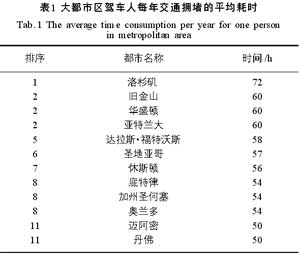| 中国城市交通模式的正确选择
|
点击量:7404 |
文章编号:1672-5328(2008)02-0006-06
仇保兴
(中华人民共和国建设部,北京 100835)
摘要:为了使正处于城镇化、工业化和机动化高度重叠的特殊时期的我国城市,能够正确选择城市交通发展道路,对全球城市交通模式进行了划分。揭示了以美国为代表的“无序机动化”的现实危害,分析了少数国家推动的“消极机动化”城市交通模式在我国推行的不现实性。在此基础上,结合中国城市所处的发展阶段,提出构建具有中国特色的可持续城市交通模式,阐述了该模式的内涵和具体策略。最后指出,城市只有坚持“可持续机动化”的发展思路,才能建立起节能减排、方便出行、安全可靠的城市交通系统。
关键词:交通政策;城市交通模式;可持续交通模式;消极机动化;无序机动化
中图分类号:U491.1+7
文献标识码:A
Brief Discussion on Choice of Urban Transportation Development Patterns in China
Qiu Baoxing
(Ministry of Construction P.R.China, Beijing 100835, China)
Abstract: This paper categorizes urban transportation development patterns existing now in the world, so that an appropriate urban transportation development pattern can be identified for China during this particular period of a high concurrence of urbanization, industrialization, and motorization. After pointing out the eventual disadvantages of "a disorder motorization" typically seen in USA, and the unrealistic "negative motorization" implemented in a few Euro countries, the paper proposes a Chinese characterized and sustainable urban transportation development pattern that may fit in the current phase of urban development in China, and specifies in detail the pattern's definition as well as scenarios. Finally, the paper states that persisting in implementation of a sustainable urban development pattern in China is the only way to build an urban transportation system that is sound in terms of saving energy, reducing emission, facilitating travelers, and enhancing safety and reliability.
Keywords: transportation policy; urban transportation patterns; sustainable urban transportation pattern; negative motorization; disorder motorization
1 “无序机动化”模式的初期“辉煌”与现实危害
以美国为代表的“无序机动化”模式的核心是:政府鼓励高速公路的发展,倡导人人拥有小汽车并以此作为刺激经济发展的需求动力。该模式的公共政策起因为:错误地选择高速公路优先发展的策略,盲目将城际高速公路规划、建设、运行模式引入城市交通。
在长达一个世纪的时间里,美国政府由于采取自由放任的机动化策略,大量投资建设高速公路和鼓励全民购车,确实刺激了本国经济的发展,该阶段被称之为“车轮上增长的黄金时代”。但也造成了一系列严重的后果:
1) 人均汽油消耗量是同等收入水平的日本与欧盟国家的5倍①。2006年,美国人均石油消耗量高达3.28 t,是中国人均水平的10倍以上②。
2) 私人拥有小汽车助长了居住选择空间范围的扩大,使城市的发展失去弹性,1990年,城市建成区人口密度仅为1890年的1/3,引发了大量耕地的占用和生态环境的破坏③。
3) 造成世界上最严重的城市交通拥堵问题。例如,专门为私人机动车设计的城市——洛杉矶,平均拥堵时间已达72 h/a,为全球第一(见表1)④。有人测算,1911年骑马或者坐马车在几十万人口的洛杉矶街上走,时速是11英里(约17.7 km),现在乘坐小汽车,时速仅6.44 km[1]。

4) 由于长时间依靠私人小汽车外出活动,美国已成为肥胖症增长最快的地区,因肥胖症引发的各种慢性病导致全国社会医疗支出高达1 600亿美元,每年还以30%的幅度增长,已成为影响国家财政安全的顽症。
5) 日益恶化的拥堵问题,不仅使公众对市政当局失望,而且浪费了大量的社会财富。研究表明,以公共交通为基础的城市在交通上的费用占当地GDP的5%~8%,<